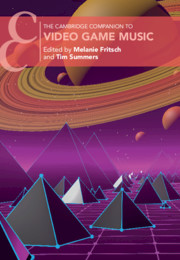Book contents
- The Cambridge Companion to Video Game Music
- Cambridge Companions to Music
- The Cambridge Companion to Video Game Music
- Copyright page
- Contents
- Figures
- Tables
- Musical Examples
- Contributors
- Preface
- A Landmark Timeline of Video Game Music
- Foreword: The Collaborative Art of Game Music
- Introduction
- Part I Chiptunes
- Part II Creating and Programming Game Music
- Part III Analytical Approaches to Video Game Music
- 9 Music Games
- 10 Autoethnography, Phenomenology and Hermeneutics
- 11 Interacting with Soundscapes: Music, Sound Effects and Dialogue in Video Games
- 12 Analytical Traditions and Game Music: Super Mario Galaxy as a Case Study
- 13 Semiotics in Game Music
- 14 Game – Music – Performance: Introducing a Ludomusicological Theory and Framework
- Part IV Realities, Perception and Psychology
- Part V Game Music, Contexts and Identities
- Part VI Beyond the Game
- 24 Producing Game Music Concerts
- Select Bibliography
- Index
10 - Autoethnography, Phenomenology and Hermeneutics
from Part III - Analytical Approaches to Video Game Music
Published online by Cambridge University Press: 15 April 2021
- The Cambridge Companion to Video Game Music
- Cambridge Companions to Music
- The Cambridge Companion to Video Game Music
- Copyright page
- Contents
- Figures
- Tables
- Musical Examples
- Contributors
- Preface
- A Landmark Timeline of Video Game Music
- Foreword: The Collaborative Art of Game Music
- Introduction
- Part I Chiptunes
- Part II Creating and Programming Game Music
- Part III Analytical Approaches to Video Game Music
- 9 Music Games
- 10 Autoethnography, Phenomenology and Hermeneutics
- 11 Interacting with Soundscapes: Music, Sound Effects and Dialogue in Video Games
- 12 Analytical Traditions and Game Music: Super Mario Galaxy as a Case Study
- 13 Semiotics in Game Music
- 14 Game – Music – Performance: Introducing a Ludomusicological Theory and Framework
- Part IV Realities, Perception and Psychology
- Part V Game Music, Contexts and Identities
- Part VI Beyond the Game
- 24 Producing Game Music Concerts
- Select Bibliography
- Index
Summary
When studying a video game’s musical soundtrack, how do we account for the experience of hearing the music while playing the game? Let us pretend for a moment that a recording of Bastion (2011) is not from a game at all, but a clip from perhaps a cartoon series or an animated film.1 We would immediately be struck by the peculiar camera angle. At first, when ‘The Kid’ is lying in bed, what we see could be an establishing shot of some sort (see Figure 10.1). The high-angle long shot captures the isolated mote of land that The Kid finds himself on through a contrast in focus between the bright and colourful ruins and the blurry ground far beneath him. As soon as he gets up and starts running, however, the camera starts tracking him, maintaining the isometric angle (from 0:02 in the clip). While tracking shots of characters are not uncommon in cinema, this particular angle is unusual, as is the rigidity with which the camera follows The Kid. Whereas the rigidity is reminiscent of the iconic tricycle shots from The Shining (1980), the angle is more similar to crane shots in Westerns like High Noon (1952). It would seem easy to argue that the high angle and the camera distance render The Kid diminutive and vulnerable, but David Bordwell and Kristin Thompson warn against interpreting such aspects of cinematography in absolute terms.
- Type
- Chapter
- Information
- The Cambridge Companion to Video Game Music , pp. 159 - 175Publisher: Cambridge University PressPrint publication year: 2021
- 1
- Cited by



